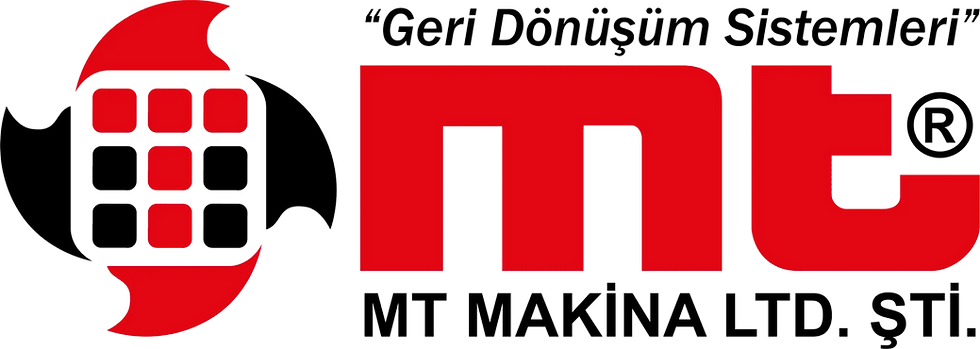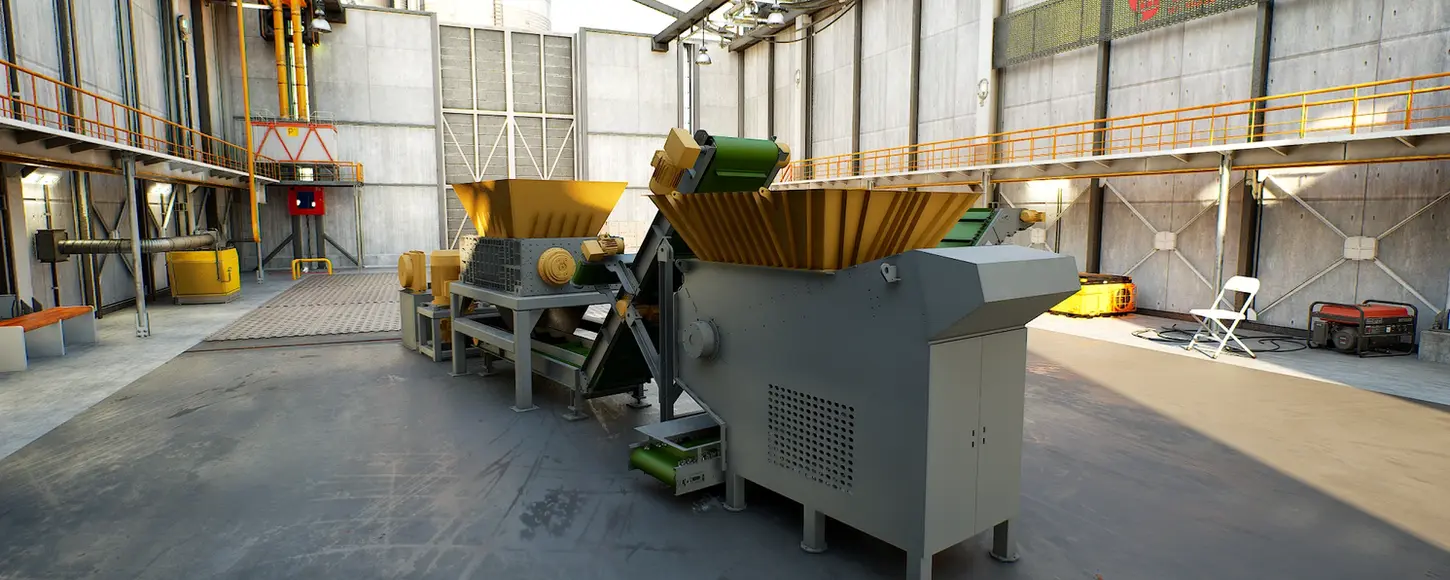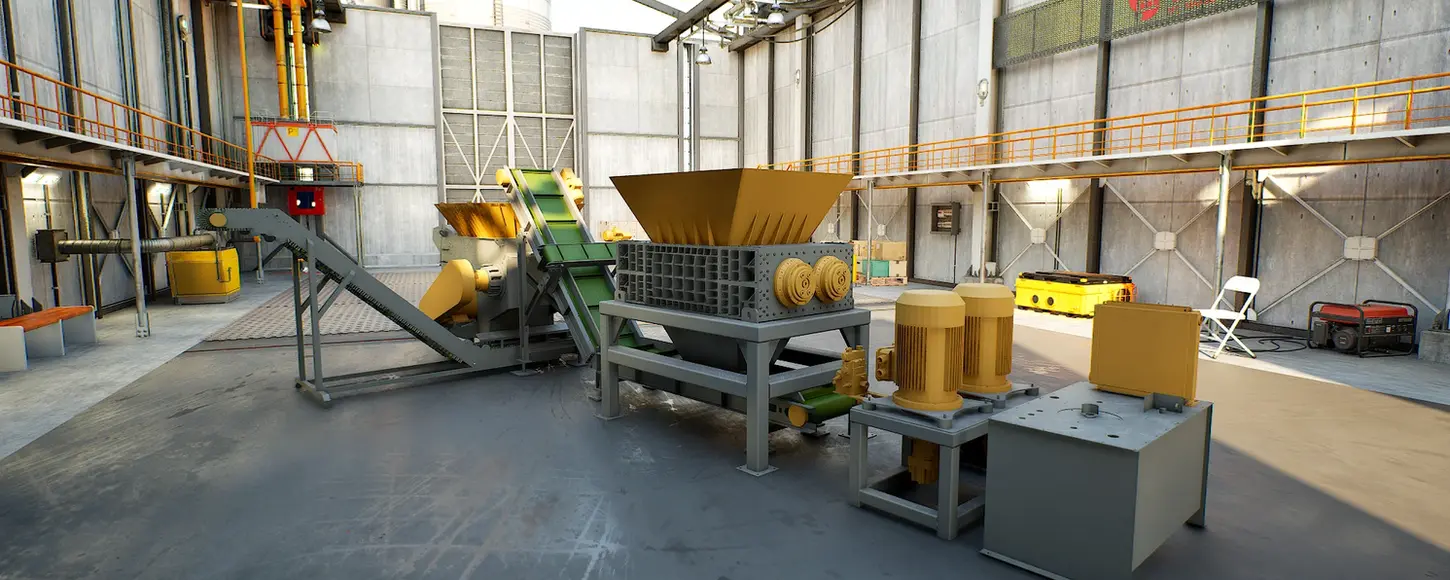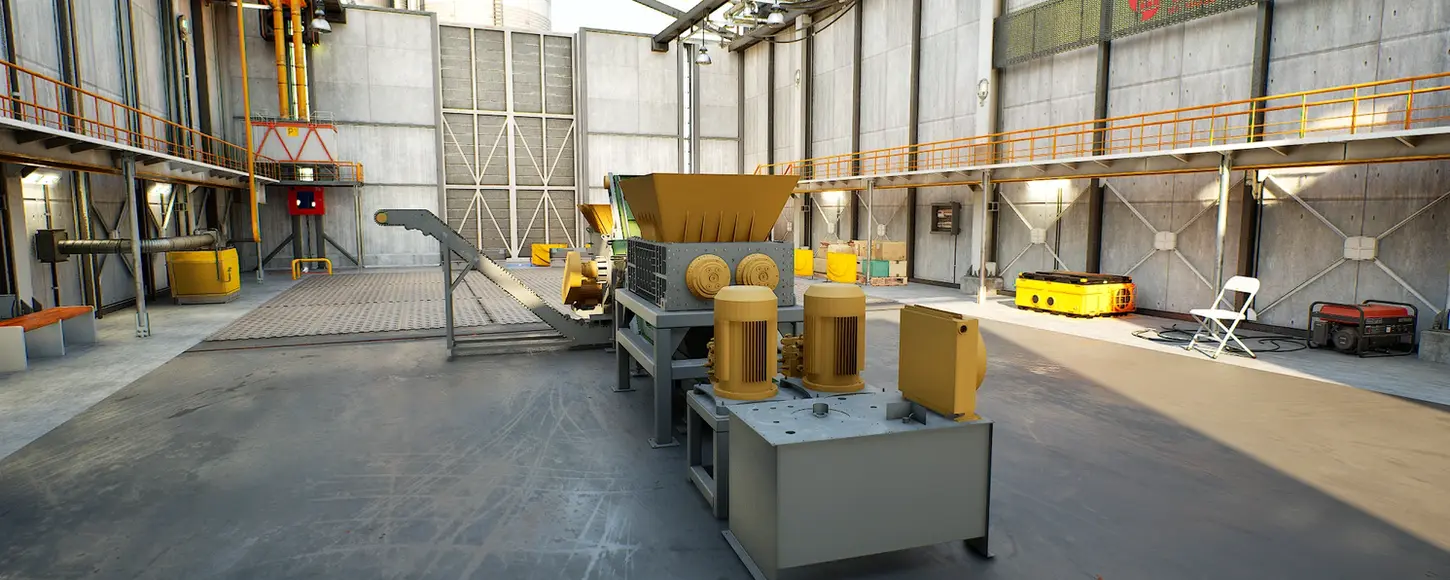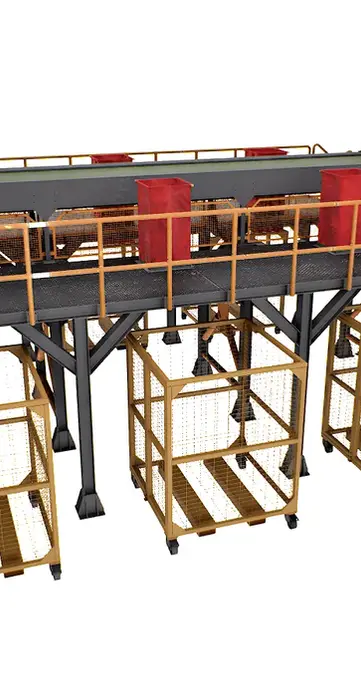Make a Difference in Waste Management with Textile Fabric Shredding Unit
The textile sector is a large industry that requires millions of tons of textile waste recycling every year. The fashion industry's fast production cycle and consumer habits increase the need for old clothing recycling. Fabric recycling processes are critical to prevent these wastes from harming the environment. Efficient recycling of textile waste is a big step towards a sustainable future. Textile fabric shredders play an important role by being at the center of this process.
Developed for textile recycling companies, the textile fabric shredding machine is used to recycle waste fabrics. This machine usually consists of double-shaft and single-shaft systems. The double-shaft textile fabric shredding machine speeds up the waste fabric recycling process by recycling large volumes of scrap fabric. Then, the single-shaft textile fabric shredding machine reduces these materials to smaller sizes and makes them ready to be processed for garment recycling.
Double Shaft Textile Fabric Shredding Machine
The double shaft textile fabric shredder contributes to the clothing recycling process by processing different textile materials such as cotton, polyester, wool, denim. Thanks to its powerful motors and durable blades, it quickly shreds large volumes of textile waste and offers an ideal solution for fabric recycling projects.
Single Shaft Textile Fabric Shredding Machine
Single shaft textile fabric shredding machine reduces pre-shredded textile waste into smaller sizes. This process makes textile waste suitable for energy production in the fabric waste recycling process. Efficiency is increased when recycling fabrics.
The textile fabric shredder machine developed for textile product recycling is an environmentally friendly solution for the recovery and management of textile waste. Both double-shaft and single-shaft systems accelerate the waste clothing recycling process, providing an important step for a cleaner environment.
Fabric Shredding Machine Advantages and Application Areas
Textile fabric shredding machine contributes greatly to the protection of natural resources by reusing textile waste and reduces environmental pollution. Textile fabric shredding machine, which increases efficiency in the textile recycling process, optimizes waste management processes and increases the performance of recycling facilities. Correct processing and recycling of waste during the fabric recycling process minimizes environmental impacts. In addition, significant energy savings are achieved by recycling fabric. With old clothing recycling, these wastes are re-evaluated and added to the economy.
Application Areas
Textile fabric shredding machine provides shredding and reprocessing of production waste, scrap fabric recycling and unused textile products. Textile fabric shredding machine offers a great advantage in recycling fabric waste, recycling of excess production or defective products. Shredded textile materials can be evaluated as insulation material or filling material. With waste clothing recycling, shredded textile waste can be used as alternative fuel in incineration plants thanks to the recycling fabric process. Textile waste recycling and fabric recycling are of critical importance for companies looking for sustainability and environmentally friendly solutions. Textile fabric shredding machine, which provides textile product recycling, both increases efficiency and optimizes the textile recycling process, ensuring effective disposal of textile waste. Textile fabric shredding machine is an indispensable system for environmentally friendly recycling projects by providing an effective solution in clothing recycling, waste fabric recycling and scrap fabric recycling processes.
Textile Fabric Shredding Machine for Recycling Textile Waste
Two Stage Textile Shredding Unit Performance and Efficiency

High Efficiency
Textile fabric shredding machine processes textile waste quickly and efficiently, accelerating the recycling process.

Durable Structure
High quality steel blades and sturdy construction ensure long-lasting use with the textile fabric shredder machine.
.webp)
Ability to Process Various Materials
Textile fabric shredding machine offers a wide range of applications by processing materials such as cotton, polyester and wool.
1.webp)
Energy Recovery
The waste processed with the textile fabric shredding machine is converted into energy in incinerators, providing sustainable energy.

The fabric shredding machine can quickly and efficiently shred large quantities of fabric waste, operating at capacities ranging from 500 kg to 10,000 kg per hour. These machines increase the efficiency of recycling plants and speed up waste management processes. Manufactured from high quality materials, fabric shredders withstand intensive use and have a long service life, reducing your operating costs and shortening the return on your investment.
Fabric shredding machines are equipped with sharp blades that can easily cut different types of fabrics, so even the toughest textile waste is processed without any problems. Designed with energy efficiency in mind, these machines offer an environmentally friendly and economical solution. Low energy consumption reduces operating costs and minimizes environmental impact.
Use of Textile Waste as Energy in Incinerators After Shredding
1.webp)
Textile Shredding Unit Technical Specifications
Our textile shredding unit, which offers maximum efficiency in textile recycling processes, stands out with its durable structure and advanced technological equipment. It shreds fabric, clothing, nonwoven and similar textile waste quickly, safely and homogeneously, making it ideal for subsequent processes.

Textile Fabric Shredding Machine Video Gallery
Our textile shredding unit, which recycles textile waste quickly and effectively, stands out with its high torque blade system and automatic conveyor structure. Our system, which shreds fabric, clothing and industrial textile waste in ideal sizes, is a powerful solution for sustainable production. Watch the videos, see the performance closely.
- 01
- 02
- 03
- 04
- 05
- 06
- 07
- 08
- 09
- 10
- 11
- 12
- 13
- 14
- 15
- 16
- 17
- 18
- 19
- 20
- 21
- 22
- 23
- 24
- 25
- 26
- 27
- 28
- 29
- 30
- 31
- 32
- 33
- 34
- 35


